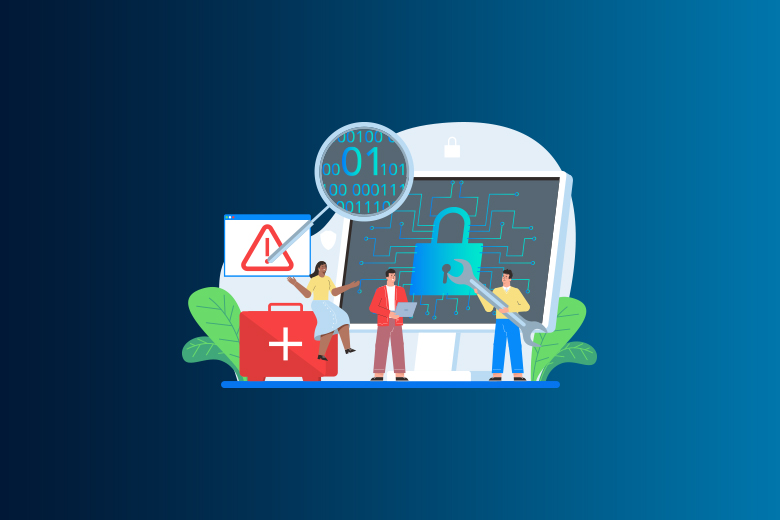15 December 2023
SafeAeon Inc.While working on digital security, it's fascinating yet vital to explore how we can outwit social engineering attacks. These modern-day digital con artists don't rely on breaking codes; instead, they exploit human psychology to sneak into our virtual vaults. To stay a step ahead, we need to peek into their bag of tricks, unveiling the secrets behind phishing emails and clever pretexting calls. Alluring baiting strategies also play a key role in their arsenal.
Imagine fortifying our digital lives not just with impenetrable passwords, but also with cutting-edge multi-factor authentication. Moreover, the power of knowledge and constant vigilance is indispensable. By weaving a culture of cybersecurity awareness into the fabric of our daily digital interactions, we transform from potential targets into savvy defenders. This fresh perspective on tackling social engineering attacks offers an exciting journey into securing our information in the digital age.
Baiting:
For this approach to work, you need to get people to be curious or greedy. It usually involves putting physical items, like USB drives that have malware on them, in places where they are easy to find, like the bathrooms or parking lots of companies that are being targeted. The names of these gadgets can be changed to make them look official or appealing, like a list of employee pay.
Malware is put on the victim's system as soon as they use the gadget. Baiting doesn't just happen in real life; it can also happen online. Attackers might use ads that promise free software or interesting content to get people to visit harmful websites or download apps that contain malware.
Scareware:
People who get scareware get a lot of false alarms and threats that make them think their system is broken into. Pop-up alerts or warnings that say the user's system is infected and needs quick attention are a common part of this strategy.
Most of the time, these alerts offer a way out, like getting a tool that is malware. Scareware can also be spread through spam emails, which offer dangerous or useless services that look like they will make your computer safer or run faster.
Pretexting:
Pretexting is when criminals make up situations to get private information. A lot of the time, they pretend to be someone in charge or who has a good reason to ask for information, like a neighbor, police officer, or bank employee.
Once the attacker has earned the victim's trust, he or she will ask questions under the guise of verifying the victim's name or doing something important, to get information like social security numbers, addresses, or bank account information. Forgery and thorough stories can be used as pretexts to make things look real.
Phishing:
Attackers often use phishing, a technique in which they send emails or text messages that look like they are real and make people feel scared or rushed. The goal is to get people to give out private information, click on links that lead to malicious websites, or open files that contain malware.
One example is an email that looks like it came from a well-known service and tells the user they broke the rules and need to change their password. The link given takes the user to a fake website that is made to look like the real one. On this fake website, the user gives their information to the attacker without knowing it.
Spear Phishing:
This is a type of hacking that is more specific and tailored to you. To make the scam less obvious, attackers pick particular people or businesses and tailor their messages to them based on their traits, job roles, and contacts.
In a spear-phishing attack, an email could be made to look like it came from a trusted source, like the victim's IT expert. The email tells you to change your password and has a link to a fake website. The attacker has to put in more work to use this method, but it usually works very well because it is personalized and sneaky.
Watering Hole Attacks:
People who visit a certain, legal website are the target of these attacks. For example, attackers could get into a financial news site that people who work in finance often visit. The site that was hacked puts a hidden trojan on the victim's computer, which lets attackers control it from afar.
Attackers who are very good at what they do often use zero-day vulnerabilities to target specific groups, like bank customers or workers who use a certain HR tool. The value of their scheme will stay high if they wait months to act. Sometimes, instead of a website, the goal could be the weak software that the audience is using.
Baiting and "quid pro quo":
Baiting for example: US state and local government entities were attacked, according to KrebsOnSecurity. The organization distributed confused letters and CDs in Chinese-stamped envelopes. The goal was to intrigue recipients so they would install the CD and infect their systems with malware.
Quid pro quo is like baiting, but the attackers offer to do something good for the target in exchange for something. For instance, they might call a business and say they are technical help, which would lead someone to do something that would damage their system.
Physical Breaches and Tailgating:
Tailgating: It is a physical way in which people who aren't supposed to be there follow people who are supposed to be there into secure areas. It's an easy way to get around protection that works well. For example, a hacker could follow a worker through a door that needs to be unlocked.
Physical Breach: People who tailgate could be former workers, thieves, or saboteurs who want to hurt people, mess up business, or steal information. Once they get inside, they can get to private places and data, which is dangerous for the company in many ways.
What Are The Best Methods Of Reducing Social Engineering Attacks?
1. MFA, or multi-factor authentication
Don't just use passwords to keep things safe. It's not enough to just use passwords, because they are easy to figure out or break. To make things safer, use Multi-Factor Authentication. This can include biometric access, security questions, or OTP codes.
2. Constantly keeping an eye on important systems:
Make sure that systems that store private data are always being watched. Use methods like web application testing to find weaknesses both inside and outside your company. Do regular social engineering tests on your workers to see if they are easy targets for these kinds of attacks, and get rid of any fake domains you find right away.
3. Use Next-Generation Cloud-Based WAF:
For better security, get a cloud-based web application firewall (WAF) of the next generation. These are different from regular firewalls because they are made to stop social engineering attempts. Tools like AppTrana can keep an eye out for fishy behavior and stop the installation of malware, which can help stop possible intrusions.
4. Check the identity of the email sender:
Watch out for emails that look like they came from banks or internet stores that you know and trust. Talk to the writer directly to make sure the email is real. Keep in mind that real businesses will not ask for private data via email.
5. Look for an SSL certificate:
To protect data and interactions, use SSL certificates. This makes sure that no one can get to your information even if it is captured. Check the URLs of websites that ask for private information to make sure they are real. Websites that start with "https://" are safe and protected, while websites that start with "http://" are not.
6. Testing for holes:
Do hack tests to find holes in your organization's defenses that can be used against it. This helps you figure out which systems or workers need more security and what kinds of social engineering attacks can happen to you.
7. Install new security patches:
Always have the most recent security fixes for your systems, programs, and apps. When companies find security holes, they often share these patches to fix them. Not only does staying up to date lower the risk of cyberattacks, but it also makes the surroundings more resistant to them.
Conclusion
Because social engineering attacks are becoming more common in the digital age, cybersecurity needs to be more careful and cover more areas. Both people and businesses need to understand the different types of attacks, like phishing, pretexting, and baiting. Strong password policies, multi-factor authentication, and tools that stop data loss are just a few of the security steps that need to be improved to protect against these attacks. Also, regular training in security awareness is important for creating a mindset of being aware of cybersecurity issues. By learning about how attackers work along with strong security measures and ongoing training, we can make the world a safer place, which will successfully lower the risk and impact of social engineering attacks. Getting in touch with SafeAeon helps in the impeccable implementation of this proactive and all-around method is essential for keeping sensitive data and systems safe.














